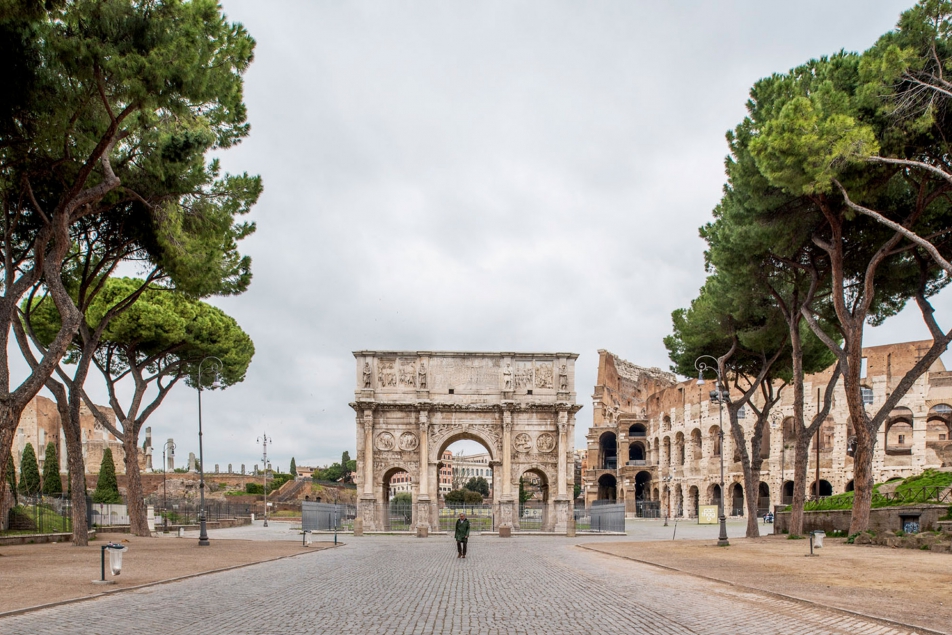PLACES
Coronavirus, the desert of places
by Pierangelo Sapegno

We've all left a few fragments of our lives somewhere. Hence why, long after we've forgotten about them, places go on living. Because they're like people, they talk to you like people and we can rediscover them, just like we do with lost loves when we come across them again a few years on, looking a little older perhaps, or maybe not: they might even have become more beautiful.
Covid distanced us from places. It did more than just distance us, it also took away the frenzy and confusion of mass society, its prissy frills, its deafening noises. Discovering a completely deserted Ponte Vecchio in Florence produced an eerie sensation, swept by a simple breeze blowing leaves and paper around, not one person, not one voice, as did gazing alone at the ancient walls of the Colosseum: no tourists, no coaches, everyone gone. Wolves took to the streets, wild boars milled around the doorsteps of Tuscan city houses. Abandoned places eventually find their magic once again, to go back in time, to the legends that recounted their origin. Venice's Grand Canal, its clear waters miraculously returning during those endless days of lockdown, giving back, along with our faces, centuries old reflections of ancient Venetian rulers and galleys. We populated our places of dreams and desires whilst stripping them from the symbols of industrial society. What we could see was our true nature, what we really are: a wonderful country built by human beings desiring to equal the beauty of God, by artists and imaginative lords, farmers who designed its fields and hills, carpenters and architects who invented the cities and of all our forefathers who died and left us these arduous hills and slopes, the land of vineyards which beats hot, as if it really had blood and possessed a soul.
We are a legend. That's what we are. Because our places were made by the people and, who knows, perhaps Covid has at least helped us to rediscover this incredible truth. In the tales we tell our children there are no elves and witches, but men and women of flesh and bone. With their sins and their suffering. And, above all, with their grandeur. There are no fairies whispering on the glistening waters of Carlingford Lough, in amongst the plush lands of Ireland, to tell of the footsteps left by giants, there is no goddess called Garavogue flying above County Meath shaping the rocks and land. If you gaze at Florence Cathedral and happen to see a bovine head on its side wall, you'll be told it all happened because a carpenter helping to build the cathedral had a relationship with a baker's wife, who reported them to the ecclesiastical court to force them to cease their relationship. So the carpenter decided to place a bull's head in that very spot, so the cuckold husband, who according to tradition would grow horns as a result of his wife's adultery, couldn't help but see it every morning from his bakery. We are all children of a sin and that's how we built our places. But we were able to ennoble them with something within us, when we removed the blindfolds from our eyes: beauty. Even Covid couldn't take this away. But we could have rediscovered it, through the tales it tells us. And who knows whether we did. The places we love are like people, you recognise them immediately, from the smell of the sky or the coarseness of the soil, from the sound of the wind as it flows through trees or caresses a street. And in coastal places there'll be objects cast aside: a fishing net, a rope strewn across the rocks. They're not waiting for a fisherman. They're waiting for his legend. Because this is what we are.
(© Pierangelo Sapegno/La Stampa, July 28, 2020)
(In the photograph: The Arch of Constantine and the Colosseum, Rome Photograph by Federico Scarchilli)